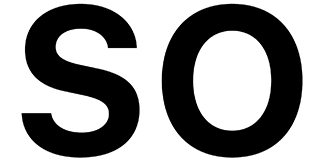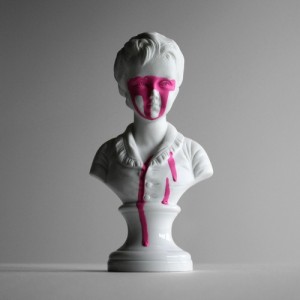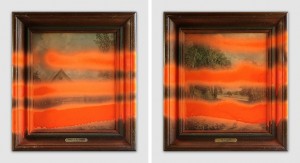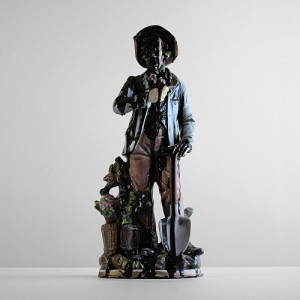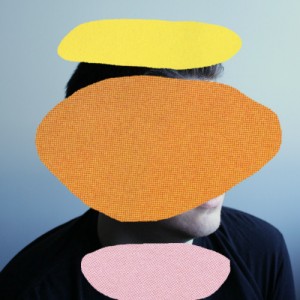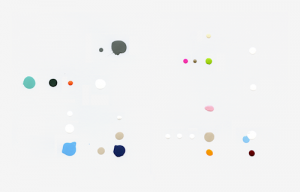Being somewhat of the curator for the gallery that is Serial Optimist, or really, being just a fan of art, I spend hours upon hours searching, reading, and looking at different art from current artists around the world. Chad Wys caught my eye earlier this year, and I found myself going back to his site every few weeks to enjoy his work. Chad was nice enough to engage in a very thoughtful conversation about himself, his work, and his aesthetic.
Serial Optimist: Chad, tell us a little bit about you, where are you from, where do you live now, and what made you decide to become an artist?
Chad Wys: I was born, raised, and currently live in central Illinois. I’ve always had an interest in art. Before I knew how to read or write I can recall drawing pictures in an effort to communicate what I was feeling. Now, I’m one of the strange breeds of art history scholar/artist who is at home in front of a book about American impressionism and equally at home behind a camera or squeezing a paint tube.
SO: Describe to us the theme, or aesthetic, or medium you work in. Describe who Chad Wys is as an artist?
Chad: I think my work is defined by an experimentation with mediums, investigations of tradition, and a constant focus on objectification. I’m a big fan of aesthetic beauty. I’m even attracted to superficial beauty… I play with that in my work. Things that are beautiful AND conceptually profound are just that much better. Beyond that I like minimalism and I like process. I often think of artwork as language. Some artworks say a lot — too much perhaps — and some might say only a word. I look at most of my work as simple, slightly aloof phrases.
SO: Where did the inspiration come from for your “Brutalized Delights” series of work?
Chad: Inspiration mostly springs from my academic work. I’m a graduate student in Visual Culture with an emphasis in art history, and from there I have a specialized interest in art business. As such, I am highly attuned to the inherent differences between higher and lower art forms (crudely put: fine art versus kitsch). I’m fascinated by that dichotomy. I’m also fascinated by decoration and object ownership: or, what things people choose to adorn their lives with. I began traveling to local thrift stores and charity shops and marveling at the objects that people had gotten rid of. What really interested me was the hypothetical (and oftentimes materially evident) love and “use” that had been derived from these objects. So I began buying up figurines and garish decorations in an effort to collect, for myself, bits of the anonymous donors’ lives. The objects themselves are at once aesthetically lovely to see. You find yourself somewhat conflicted by how much pleasure you get from these thrift store objects. They’re so utterly gratifying and yet so utterly tasteless; they’re nothing but economical replicas and faint glimmers of the masterful originals they mimic. My alterations of these objects — often times very minimal in nature — are gestures that bear witness to my personal engagement with the object. I leave my mark on the object, as it were, in the form of an aesthetic, visual disruption that further complicates the feelings that the viewer may receive when he or she looks at the objects.
SO: It’s interesting, more and more artists these days aren’t defined by one medium, they mix and dip and snap and shoot and create in multiple ways. Would you consider yourself that kind of artist? Do enjoy one more than the other? I’m more referring to your “Portraits” series in comparison to the rest of your work.
CW: Most of my work consists of a momentary expression, quickly and almost unconsciously executed. Some works are much more deliberate than others, but seldom do I plan an attack and invest a great deal of time in the outcome. Therefore I have a staunch disinterest in sticking with one medium or one formal style. I utilize as many different mediums as I can because I feel the need to explore what can be done. I have no interest in mastering any one medium. I would say this is more an attribute of postmodernism in general than it is a personal trait. Many artists since the 1960s, and certainly through the 90s and to today, have not felt the need to specialize in just painting, or just sculpture, or just photography. Rather, everything is game. And more mediums are at our disposal now than ever before. It would be a shame to limit oneself. I feel, however, that all of my work ultimately deals with the theme of objectification. Even with my portraits of people I am reducing the sitter to a character — an object — with no clear narrative (this, ideally, puzzles and provokes the viewer).
SO: You have a piece that has been commissioned to be in the upcoming seasonof Modern Family, which just won best comedy at the Emmy’s. First off, congrats, I love that show. Second, what does that mean for you, on a personal level, to have a piece featured on such a prominent, prime time show? Were you a fan of the show before they contacted you?
Chad: I’m completely honored to be included on the show — no matter how peripherally that may be. I’m afraid I’ve never seen Modern Family save for a few moments, but I’ve heard amazing things — family and friends are big fans. I will certainly start watching. I have no idea how my artwork will incorporated, but I look forward to playing Where’s Waldo.
SO: Who are three of your favorite artists?
Chad: It’s no easy task to settle on three, nor dare I put anyone in rank order, but three that spring to mind include Goya, Richard Serra, and Gerhard Richter.
SO: What is the best thing about being an artist, what is the worst thing about being an artist?
Chad: The best thing about making art has got to be the fact that there is no limit and no restraint required to create your own work (besides any elective and selective limitation or restraint). You call the shots. It’s the most powerful thing a person can do: create for oneself. The worst thing has got to be the fear of reception. In other words, showing your work to others. Oddly, that can also be one of the best and most rewarding things. Sadly, it’s rather like putting your newborn child on a pedestal and asking if people accept it or not. It shouldn’t matter if they do or don’t, but you hope that they accept it as much as you do.
____
SO Note: View Chad’s portfolio, series, and work at his website www.chadwys.com.

